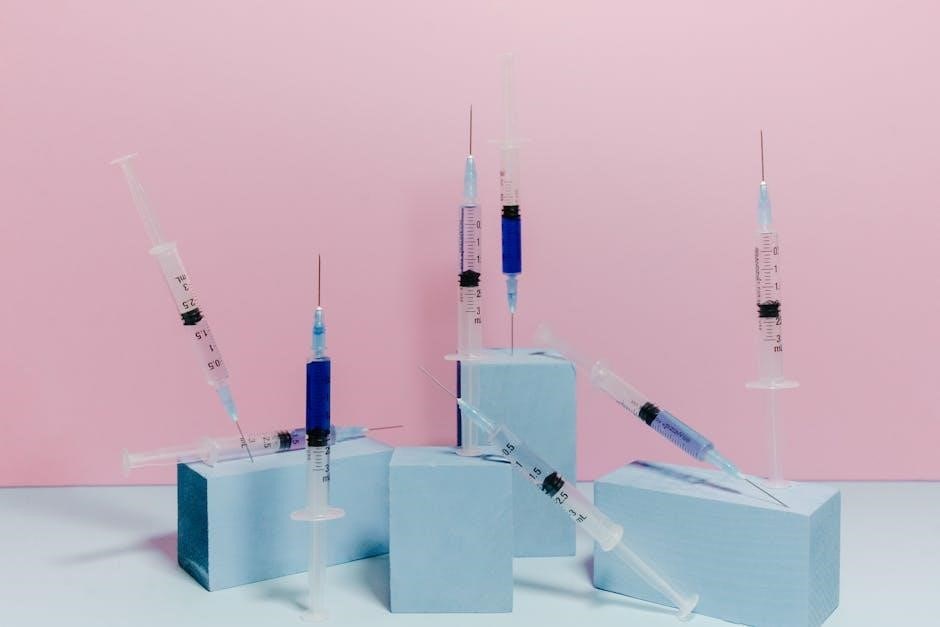Basic medical instruments include syringes and needles, used for injecting and extracting fluids, with various types and sizes available for different purposes always.
Definition and Purpose
A syringe is a medical instrument used to inject or withdraw fluids from the body, consisting of a plunger and a barrel, with a needle attached to the end. The purpose of a syringe is to deliver precise amounts of medication or fluid to a specific area of the body, and to collect samples of fluid for testing. Syringes and needles are essential tools in the medical field, used for various procedures, including vaccinations, blood sampling, and medication administration. They are designed to be sterile and disposable, reducing the risk of infection and contamination, and are available in different sizes and types to suit various medical applications and needs.
Types of Syringes
Various syringe types exist, including insulin, tuberculin, and disposable syringes, each serving specific medical purposes always effectively.
Classification and Uses
Syringes are classified into different types based on their intended use, with each type designed for specific medical applications, including insulin, tuberculin, and disposable syringes. The classification of syringes is crucial in ensuring that the right type of syringe is used for the right medical procedure. For instance, insulin syringes are used for administering insulin to diabetic patients, while tuberculin syringes are used for tuberculosis testing. Disposable syringes, on the other hand, are used for a wide range of medical applications, including vaccinations and blood sampling. Proper classification and use of syringes are essential for safe and effective medical practice, always ensuring patient safety and preventing errors.
Types of Needles
Needles vary in size, material, and shape, including hypodermic, intravenous, and surgical needles, each with specific uses always in medical settings.
Size and Material Variations
Needles come in various sizes, measured in gauges, with smaller gauges indicating larger diameters, and materials such as stainless steel, plastic, and glass, each with its own advantages and disadvantages. The size and material of the needle can affect the comfort and safety of the patient, as well as the ease of use for the medical professional. Different sizes and materials are used for different medical procedures, such as injections, blood draws, and surgery. The choice of needle size and material depends on the specific medical application and the patient’s individual needs, requiring careful consideration and selection.
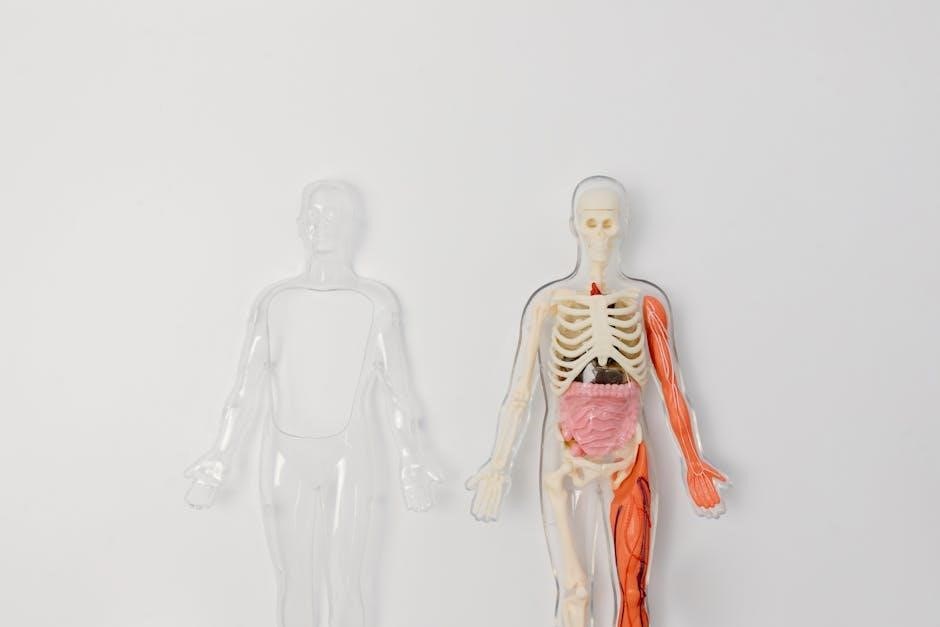
Uses of Syringes and Needles
Syringes and needles are used for medical purposes always injecting fluids.
Medical and Non-Medical Applications
Syringes and needles have various applications, including medical procedures, such as injecting vaccines and medications, and non-medical uses, like art and craft projects, and scientific research, where precise measurements are necessary, and also in laboratories for testing and experiments, and in medical facilities for patient care, and in emergency situations, where quick administration of medications is required, and in veterinary medicine, for animal care, and in many other fields, where accuracy and precision are essential, and the use of syringes and needles is crucial for successful outcomes and results always.
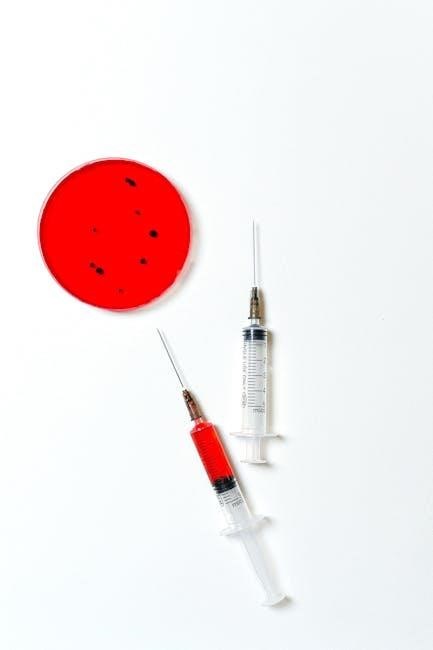
Safe Handling and Disposal
Proper handling and disposal methods are essential for preventing accidents always.
Precautions and Guidelines
When handling syringes and needles, it is crucial to follow strict precautions and guidelines to prevent accidents and injuries.
According to online resources, proper training and equipment are necessary for safe handling and disposal.
Additionally, guidelines for handling and disposing of syringes and needles are available from reputable sources, including health organizations and medical websites, providing essential information for safe practices always and everywhere.
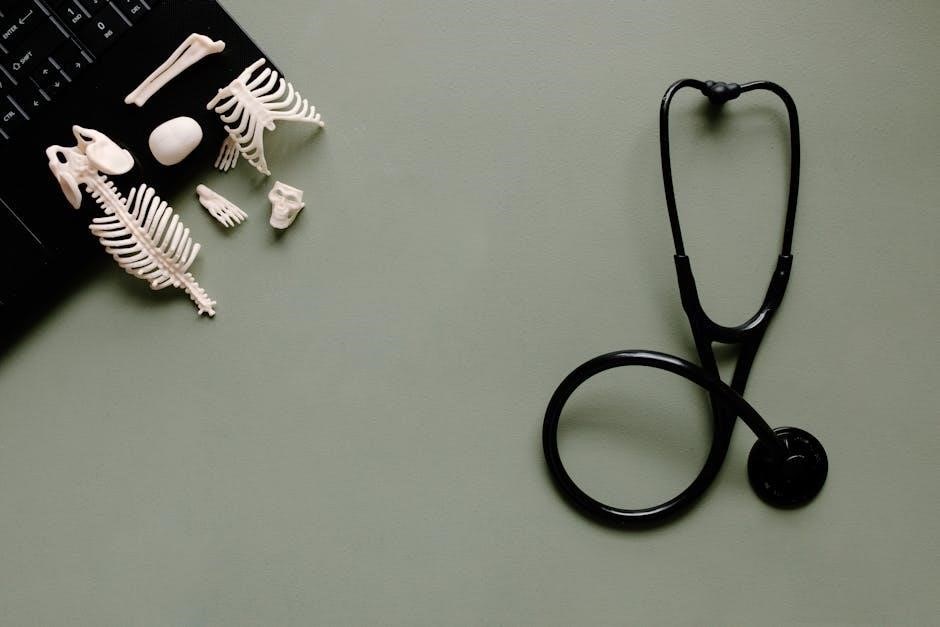
Regulations and Standards
Government agencies establish regulations and standards for syringes and needles, ensuring safety always and compliance with international guidelines and rules strictly.
Compliance and Certification
Manufacturers of syringes and needles must comply with regulatory standards, obtaining certification from reputable organizations to ensure their products meet safety and quality requirements. This involves undergoing rigorous testing and inspection, demonstrating adherence to guidelines and protocols. Certification is typically provided by independent third-party auditors, who verify compliance with international standards and regulations. The certification process helps to guarantee the safety and efficacy of syringes and needles, providing assurance to healthcare professionals and patients alike, and is an essential aspect of the medical device industry, with many manufacturers prioritizing compliance and certification.
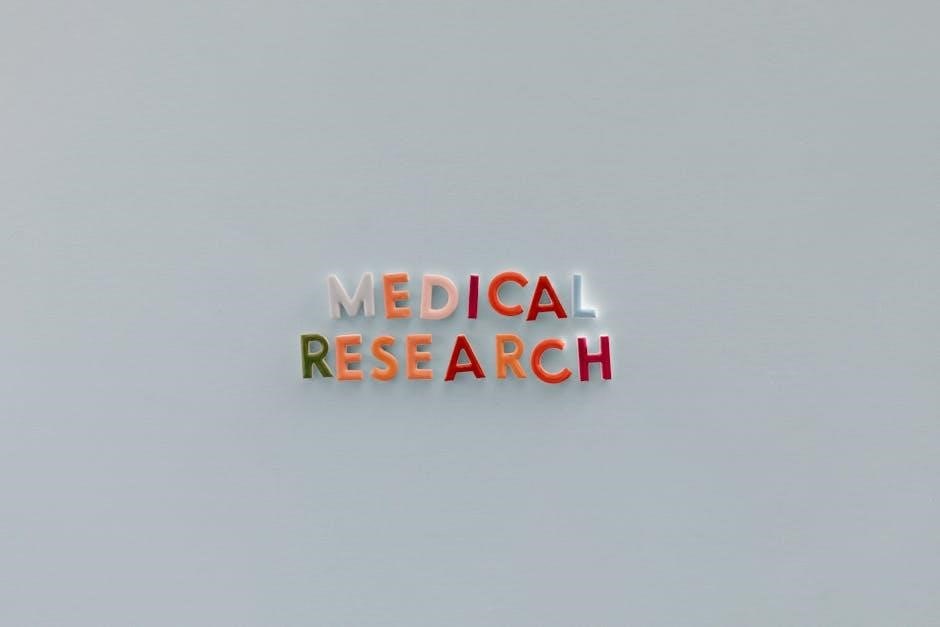
Education and Awareness
Proper education on syringes and needles is essential for healthcare professionals and patients always using online resources and guides effectively.
Importance of Knowledge and Understanding
Knowledge and understanding of syringes and needles are crucial for safe handling and use, as well as for preventing accidents and injuries. Having a comprehensive understanding of the different types of syringes and needles, their uses, and proper handling techniques can help individuals make informed decisions and take necessary precautions. Online resources, such as guides and tutorials, can provide valuable information and insights, enabling individuals to develop a deeper understanding of these medical instruments and their importance in various healthcare settings, including hospitals, clinics, and home care environments, where they are used daily by professionals.
